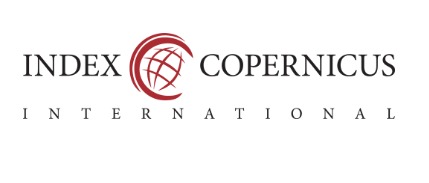A study of the tourism industry in East Taiwan
Abstract
Aim: This paper discusses potential strategies for growing the tourism sector in the area. We use Hualien County as an illustration. Hualien County is a region in East Taiwan known for its breathtaking scenery and diverse eco-friendly landscape. A crucial issue is how to effectively boost the regional economy and the tourism sector. This issue is the main focus of the paper.
Methodology: Our qualitative research is based on archival analysis of reports about Hualien’s most popular tourist spot and on participant observation. To promote tourism, we conducted a SWOT analysis of the available literature.
Findings: We discovered that the local government should coordinate the culture of festive activities and provide clear publicity for the events. The media should be used in the management of the tourism industry. Cooperation between the government and businesses should enhance the growth of the tourism industry.
Implications/Novelty: The implication is that there may still be unresolved conflicts between the quickening pace of tourism growth and the protection of the area’s natural beauty.
References
Burkart, A. J., and Medlik, S. 1981. Tourism: Past, Present and Future. London, UK: William Heinemann Ltd.
Bunchutrakun, C., Lieungnapar, A., Wangsomchok, C., and Aeka, A. 2016. “A Corpus-Based Approach to Learning a Tour Guide Talk.” International Journal of Humanities, Arts and Social Sciences 2(2): 58-63.
Department of the Interior. 1984. “Eastern Taiwan Regional Project.” Ministry of the Interior of the Republic of China, Retrieved October 16, 2016 (https://goo.gl/2KResB).
Hualien Tourism Department. 2016. “Number of Visitors Statistics: Hualien Sightseeing Area Visitors Statistics.”Retrieved October 29, 2016 (https://goo.gl/ssWWxY).
Hualien Tourist Information Network. 2016. “Rift Valley Recreational Belt.” Retrieved October 29, 2016 (https://goo.gl/BzR0xf).
Industrial Development and Investment Promotion Committee. 2015. “Investment Potential-Tourism Industry.” Retrieved October 16, 2016 (https://goo.gl/YZVBl2).
Kunnu, W. 2016. “Foreign Tourists’ Satisfaction Towards Selecting the Accommodation Service (Hostel) in Bangkok.” International Journal of Humanities, Arts and Social Sciences 2(1): 40-44.
Li, Y. H. 2003. Introduction to Tourism. Taipei, Taiwan: Wu-Nan Culture Enterprise.
McGehee, N. G., and Andereck, K. L. 2004. “Factors Predicting Rural Residents’ Support of Tourism.” Journal of Travel Research 43(2): 131-140.
Nasser, M. A. 2017. “The Application of Local Productive System (Industrial District) in the Tourism Activities.”International Journal of Humanities, Arts and Social Sciences 3(1): 27-30.
Shen, Z., Qiu, D., Luo, X., He, D., and You, R. 2011. “Hualien Carp Lake Recreation Facilities Satisfaction-Research on Degree Survey.” Ocean Leisure Management Journal 3: 14-33.
Tourism Bureau of the Ministry of Transport. 2015. “Tourism Development Ordinance.” Retrieved October 29, 2016 (https://goo.gl/YG5z4).
Wang, Y., and Pfister, R. E. 2008. “Residents’ Attitudes Toward Tourism and Perceived Personal Benefits in a Rural Community.” Journal of Travel Research 47(1): 84-93.
Wray, M. 2011. “Adopting and Implementing a Transactive Approach to Sustainable Tourism Planning: Translating Theory into Practice.” Journal of Sustainable Tourism 19(4-5): 605-627.
Yang, M. 1999. Introduction to Tourism. Taipei, Taiwan: Yang-Zhi Culture Enterprise.
Zhao, J. 2010. A Survey of Tourism Resources in Mainland China. Taipei, Taiwan: Xiuwei Information Technology Co., Ltd.

This work is licensed under a Creative Commons Attribution-NonCommercial 4.0 International License.












.png)










